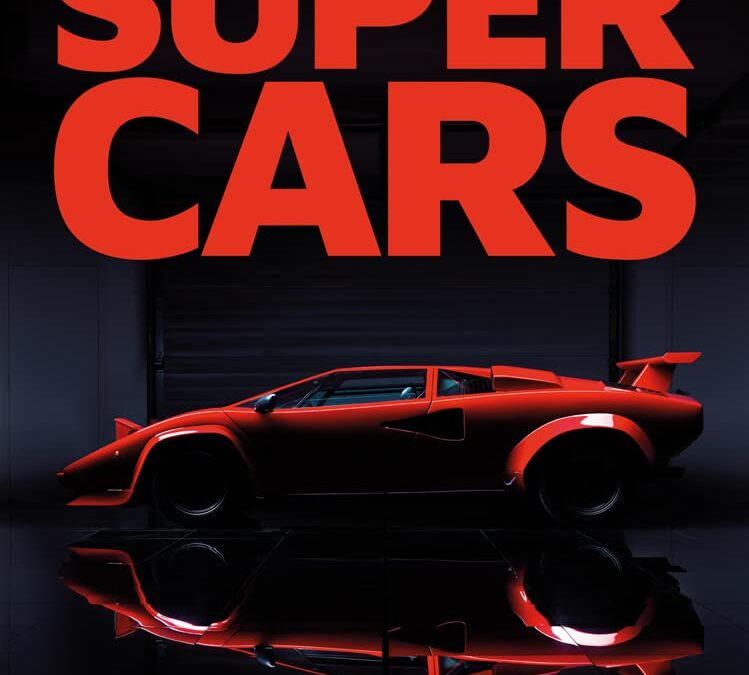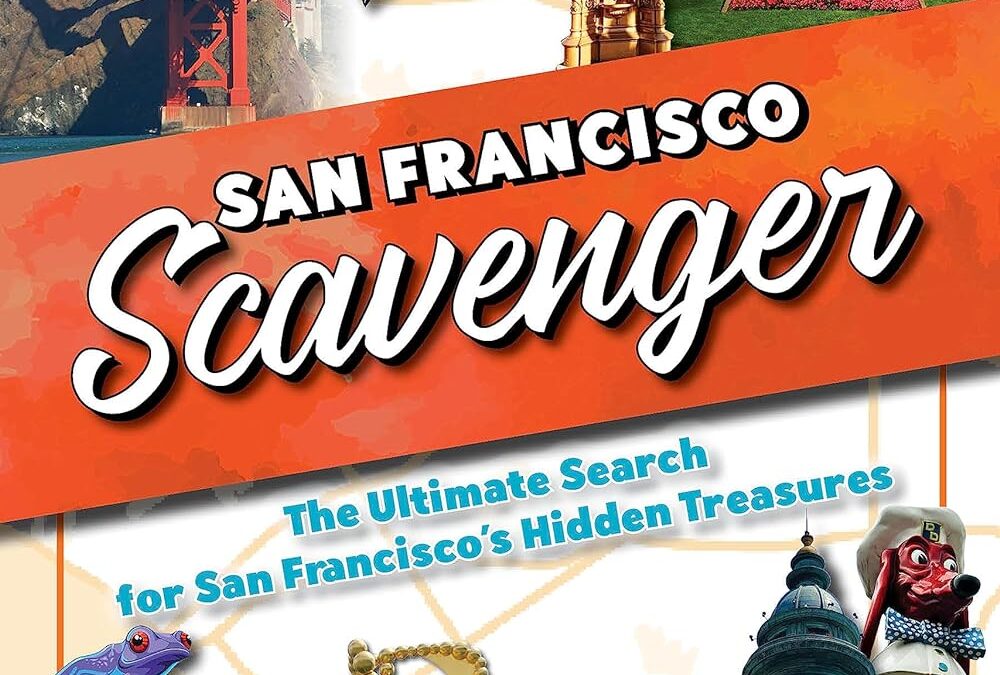
San Francisco lures people in search of a wide variety of treasure: fame, wealth, property, inspiration, love, family, community, freedom, and a fresh start. With this book in your hands, you hold a treasure map to the history of the City by the Bay―from its earliest days to more modern times. Solve 360 rhyming clues that take you on a scavenger hunt through 19 different neighborhoods across the 49 square miles of San Francisco. Each riddle includes a photo to help you find museums, public artworks, historical sites, bars and restaurants, architectural highlights, and more. Whether you love the thrill of solving a puzzle, have a desire to learn a little history, feel the urge to get out and explore, or even rediscover a city you thought you knew, find the true spirit of San Francisco in the pages of this book. Author and travel journalist Jill K. Robinson left her heart in San Francisco in her earliest childhood years. She brings her years of research, love for the city, and countless hours of exploring to this epic scavenger quest. Come with an adventurous spirit, and whether you solve the clues alone or with family and friends, this creative excursion will help you unlock the secrets of San Francisco.
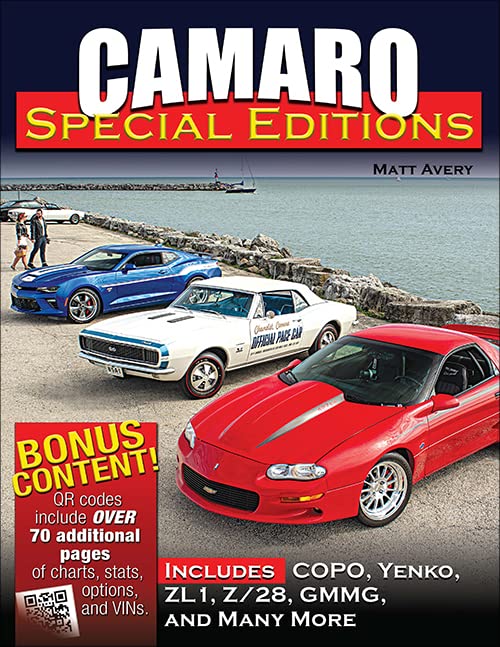
Discover a fascinating array of special edition Camaros written by Chevrolet historian and COPO authority, Matt Avery.
Chevrolet’s iconic Camaro arrived in the fall of 1966 and, although tardy to market, it came ready to mix things up in the wildly popular “pony car” segment. Ford’s Mustang was a runaway success, but this new competitor reined in momentum by offering customers an even closer friend of driving enthusiasts.
A credit to General Motors, the Camaro charged hard out of the gate, becoming an instant hit. In each of its first three years, it sold almost a quarter million units, causing a decline in sales for the crosstown Detroit rival. In the decades to follow,
Chevy crafted Camaro variants to suit everyone with enterprising hot rodders and performance tuners always taking it one step further. Enter the high-octane world of Camaro special editions.
Driven to achieve their own competition success and following the high-revving demands of enthusiasts, numerous Camaro special editions have been produced over the years, becoming some of the most collectible cars of all time.
Covered here are not only the factory models such as Indy 500 and Brickyard 400 pace and festival cars, ZL1s, anniversary editions, IROC-Zs, Player’s Challenge, Hot Wheels editions, Z/28s, and RS/SS cars. Also, Camaro Special Editions covers the legendary COPO cars and dealer go-fast specials from builders including Yenko, Dana, Nickey, Berger, Baldwin-Motion, Gorries, and Dick Harrell.
More modern performance editions are covered as well with Callaway, SLP, SVE, GMMG, Earnhardt, and more. Detailed information is provided on the most notable models from 1967 to today, including build numbers, production specs, and their collectability.
This book is a must-have resource for the Chevy and Camaro faithful.
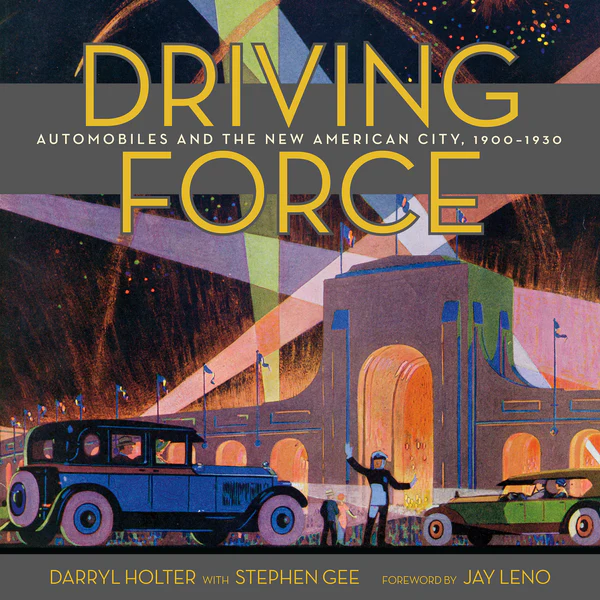
Driving Force: Automobiles and the New American City 1900-1930 (Angel City Press) explores how Los
Angeles’s enigmatic car culture propelled the explosive growth of America’s passion for cars. And with thoroughly researched text and page-after-page of vintage images, it shows how roadblocks that limited the sales of automobiles in the rest of the country, were eliminated in a new-thinking city in the earliest days of the car industry.
At the dawn of the twentieth century, as Los Angeles transformed from a rugged outpost to a booming metropolis, so too did the fledgling automobile simultaneously come of age. Ignited by an unlikely and visionary mix of entrepreneurs who ventured into unknown territory, early adopters broadened the market and convinced the public that cars were no longer a luxury—they were the ultimate modern necessity. From these early enthusiasts, men and women in various business recognized that the automobile would change society and wanted a piece of that action. The city’s auto business emerged initially among bicycle shop owners, carriage retailers, and automobile aficionados who started selling—and repairing!—cars. Their workshops thrived, expanded, and eventually became dealerships, the key component to the auto boom.
In this first major history of dealers at work—and one of the first books to chronicle the early history of cars in Los Angeles—authors Darryl Holter and Stephen Gee share the untold story of pioneering automobile dealers who seized the chance to join a start-up industry that reinvented an American city. Some became wealthy and powerful, others failed. But the lure of the automobile never wavered.
The L.A. dealers helped change the way cars were sold. They championed selling cars on credit while accepting“used cars” that buyers “traded in” so they could buy a new one. They introduced the West Coast to the concept of dealerships with service bays for on-site car repairs; persuaded manufacturers to design cars to their specifications and created custom vehicles and innovations that were copied around the country.
With more than 150 spectacular vintage images—many never before published—Driving Force brings to life the people who made the automobile an icon of the modern American city. In its pages, readers will discover how the story of the automobile is interwoven with Southern California’s unique topography and sun-drenched climate; a new era of women’s rights, and a growing female influence on automobile design; the creation of the Los Angeles Auto Show and the remarkable 1929 fire that threatened to destroy it; and how car dealers launched renowned L.A. radio and television stations, including KNX, KFI, and KCBS-KCAL.
As car collector extraordinaire Jay Leno explains in his Foreword to Driving Force, “Darryl Holter shows that auto retailers connected manufacturers to buyers, changing America and shaping the history, economy, and culture of Los Angeles.”
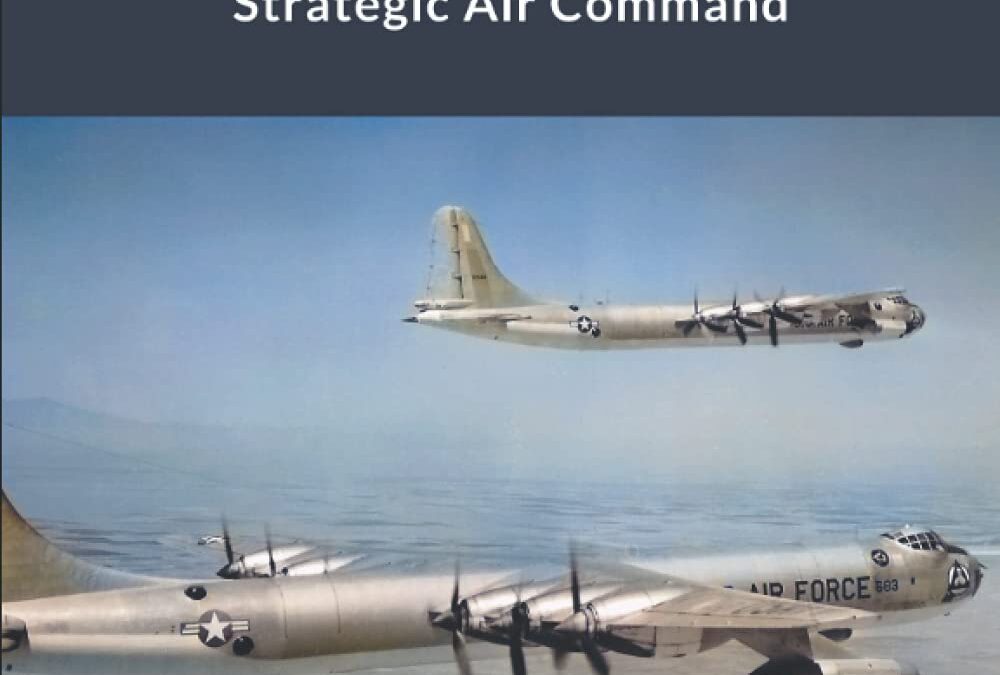
Hi, this is H.J. Campbell and I want to say thanks for your interest in my book. It’s a concise history and engaging story that I believe every military aviation history lover will enjoy. In this book you’ll discover the incredible B-36 Peacemaker – SAC’s “Big Stick” – and the first true intercontinental bomber capable of carrying heavier bombloads higher and farther unrefueled than any other aircraft. Details include the design and development, complete aircraft lineage, aircraft basing, evolution of model changes, deployments, atomic testing history… and the list goes on!
Theodore Roosevelt once said, “Speak softly and carry a big stick”, which was the essence of Strategic Air Command’s big stick, the B-36 Peacemaker. The B-36 was the mainstay of United States strategic deterrence policy during the early years of the Cold War. Given its ability to carry two of the largest 21-ton Mk 17 thermonuclear weapons in the arsenal, the B-36 seemed purpose-built for the role. But it was simply in the right place at the right time. Its design started even before the United States entered World War II, long before the Cold War was imagined, and well before the advent of an air-droppable nuclear bomb.
The B-36 was a truly incredible aircraft and unlike any other in its day. It was the largest piston engine bomber ever built and, at 230 feet, still holds the record for the longest wingspan of any American combat aircraft. Because of its immense size and unprecedented wingspan, it could lift more weight to higher altitudes than any other aircraft. It was the first aircraft to carry a 10,000-pound bombload over 10,000 miles. It was the first, and only, true intercontinental bomber capable of flights of over 9,000 miles without refueling and capable of remaining aloft for over 51 hours. Given the size and range of modern-day aircraft, it is difficult to understand how farsighted its specifications were at the time. It is important to understand the context of the day to fully comprehend the enormity and significance of the challenge.
I hope you’ll get your copy now of this enduring historical reference, written by a former SAC Warrior and Air Force veteran – a welcome addition to every aviation lover’s library!

Renowned automotive writer Pat Foster celebrates the simple joy of hitting the highway in a vintage camper, trailer, RV, or van in this illustrated examination of their hardware and cultural histories—featuring evocative modern photography of restored and original-condition campers, as well as period photos and advertising art.
The look, the feel, and the sheer style of vintage campers and trailers are impossible to duplicate in sterile modern units. It’s little wonder more and more of us, from all walks and ages, are ditching the increasingly hectic modern life and rediscovering the simple freedom of small, uncluttered spaces and the wide-open road.
Foster breaks down the subject by camper categories, illustrating his knowledgeable text with beautiful modern and period images. Sidebars examine topics like clever designs that make small living possible, the evolution of campers and gear over the ages, tips for trailer living, first-person anecdotes from enthusiasts, and much more. Along the way, Foster covers all of the most popular camper and van brands, such as Winnebago, Airstream, Shasta, Spartan, Scamp, Volkswagen, and more.
Whether lived on the road, your driveway, or your armchair—your minimalist adventure starts here.
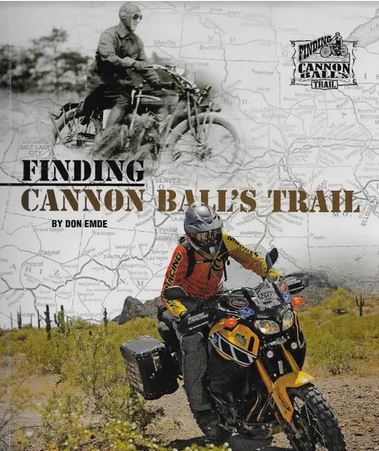
Just before midnight on May 14, 1914, a ferryboat departed from Weehawken, New Jersey and chugged along in the darkness across the Hudson River to Manhattan. On board was a tired-looking rider with an equally tired-looking motorcycle. The boat landed at ten minutes after midnight and there to greet him were representatives from the Federation of American Motorcyclists, the nation’s major motorcycle sanctioning organization. What they knew was that this rider, Erwin G. Baker, had just completed the fastest transcontinental trip in American history.
Baker’s journey of 3,497 miles had taken him 11 ½ days. And, oh, what an incredible 11 ½ days it was! After leaving San Diego on May 3rd he rode coast to coast, averaging only four hours sleep each night. Danger seemed to await him at every turn. In the Arizona desert he ran out of gas and had to push his motorcycle five miles in the sand in 119-degree heat. When he got to New Mexico he hit some rainy weather, which turned the historic Santa Fe Trail into a deep mud bog. He suffered six flat tires once on the same day, which he had to repair with the tools he carried with him, and in Pennsylvania he rode 232 miles of mud in a steady downpour. Despite all this, Baker continued east as fast as he could legally go. When he landed on Manhattan, he had smashed the current record holder’s long-standing record by more than nine days. His amazing journey concluded at the Hotel Astor in New York City where he was met by journalists wanting to get the story. One shouted out that he had “shot across the country like a cannon ball.” He was forever more Cannon Ball Baker!
In 2011, Don Emde, a former winner of the prestigious Daytona 200 motorcycle race and 1999 Inductee to the Motorcycle Hall of Fame, embarked on a multi-year project to understand the riding conditions and retrace the route that Cannon Ball Baker had taken in 1914. Using modern day computer search tools, GPS, and current adventure-style motorcycles, he and an assistant, Joe Colombero, logged numerous miles in the California and Arizona desert to work out what remains of the dirt roads that Baker had ridden. Their research ultimately took them on a ride all the way to New York City on the same route that Baker had taken. Their discoveries and difficulties is a great story in itself. Finally, in 2014, Emde led a group of 30 motorcyclists on a celebration ride from San Diego to New York City, just as Baker had done a century before. The group departed on May 3rd—100 years to the minute from when Cannon Ball had left San Diego—and arrived in New York just as he had on May 14th.
This is the story of three epic motorcycle rides across America.
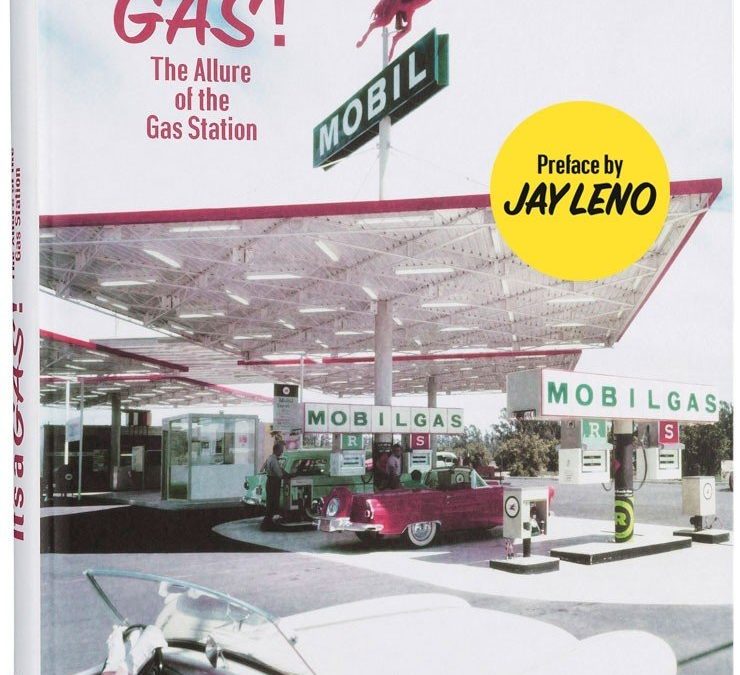
The first gasoline was sold in pharmacies―but this was to change in the 1950s. As the car experienced its great rise in popularity, gas stations began to pop up like mushrooms out of the ground. Futuristic and progressive, these modern temples of mobility became roadside reference points for young people hungry for independence, and to everyone who strove for a sense of freedom.
It’s a Gas! explores the surprisingly diverse world of the gas station―a functional high tech temple, a transit zone, a film set, a converted residence, or an abandoned ruin hidden in a backyard. The world of pumps is full of surprises, ready to be discovered in this book.
The preface was written by US-American talkshow legend and passionate car collector Jay Leno.
Sascha Friesike, Assistant Professor of Digital Innovation at VU University in Amsterdam and associated researcher at Alexander von Humboldt Institute for Internet and Society Berlin, is the author of the crime series Grobmann und Pieper and photographer of gas stations.

Magnus Walker is one of life’s originals. Serial entrepreneur, fashion designer, TV presenter, motivational speaker, and one of the world’s most prolific Porsche collectors, the dreadlocked, tattooed hoarder of individual creativity is a very modern incarnation of idiosyncratic success. Raised in the grim, urban decay of Thatcher’s Britain, Magnus Walker left school with just two O levels and drifted for several years before buying a one-way ticket to America. Now, 30 years and three successful businesses later, by following his instincts, rejecting convention, and pursuing his passions, Magnus has succeeded against all the odds. Here, for the first time, is the full story of his journey from a Northern steel town to the bright lights of Hollywood, from a boy with little hope to an anti-establishment hero. Along the way we’ll witness his potent combination of inspiration and graft, discover his motivations and his ambitions, and come to understand his philosophy and the keys to his success. Inspiring and exhilarating, Urban Outlaw is a compelling tale of succeeding through pure instinct and determination by a man who was brave enough to follow his own path.

This richly illustrated book chronicles lighter-than-air flight from Archimedes’ discovery of the principle of buoyancy to the latest in sport balloons and plans for future airships. Far more than a timeline of events, Lighter Than Air focuses on the people―flamboyant and daring, heroes and scoundrels―who made history in the sky. Here are the eighteenth-century pioneers who first took to the skies, the peripatetic aeronauts who criss-crossed two continents a century later, the airmen who manned the great rigid airships, and the intrepid balloonists who flew their craft across oceans and continents in the years following World War II.
The first half of the volume recounts the invention of the balloon, the golden age of the professional aerial showmen in Europe and America, the use of balloons for aerial reconnaissance, and the key role of balloons in scientific research. The second half presents the rich tale of the airship from eighteenth-century dreams to twentieth-century reality. These chapters describe the early development of the pressure airship, the emergence of the rigid airship and its golden age in the first half of the twentieth century, and the military and civil applications of these aerial behemoths. The author concludes by discussing modern blimps, sport balloons, and dreams of a future for airships.
The highly accessible text is complemented with a wealth of prints and photos from the National Air and Space Museum in Washington, D.C., the Museé de l’Air et de l’Espace at Le Bourget, the Zepplin-Museum at Zepplinheim, and the Imperial War Museum in London. Written by award-winning aeronautical historian Tom D. Crouch, Lighter Than Air brings to life the color and excitement of buoyant flight.

Why do aircraft fly? How do their wings support them? In the early years of aviation, there was an intense dispute between British and German experts over the question of why and how an aircraft wing provides lift. The British, under the leadership of the great Cambridge mathematical physicist Lord Rayleigh, produced highly elaborate investigations of the nature of discontinuous flow, while the Germans, following Ludwig Prandtl in Göttingen, relied on the tradition called “technical mechanics” to explain the flow of air around a wing. Much of the basis of modern aerodynamics emerged from this remarkable episode, yet it has never been subject to a detailed historical and sociological analysis.
In The Enigma of the Aerofoil, David Bloor probes a neglected aspect of this important period in the history of aviation. Bloor draws upon papers by the participants—their restricted technical reports, meeting minutes, and personal correspondence, much of which has never before been published—and reveals the impact that the divergent mathematical traditions of Cambridge and Göttingen had on this great debate. Bloor also addresses why the British, even after discovering the failings of their own theory, remained resistant to the German circulation theory for more than a decade. The result is essential reading for anyone studying the history, philosophy, or sociology of science or technology—and for all those intrigued by flight.
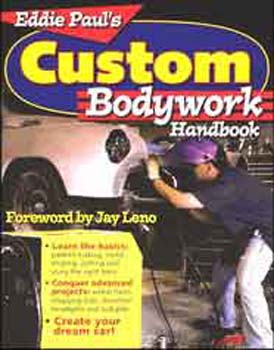
Now you can learn from master movie car customizer, Eddie Paul, in Eddie Paul’s Custom Bodywork Handbook. Discover how this Hollywood wizard handles everything from old-school top chops on 1940s Fords, to cutting-edge bodywork on modern high-revving tuner cars.
Learn secrets to:
Selecting and using the proper metal and tools
Simple and complex metal fabrication, from shrinking and stretching, to challenging rust repair
Pattern making, vacuum forming, working with wooden forms and creating your own custom parts from scratch
Traditional bodywork projects, such as frenched headlights and taillights, fender flares, custom hoods and grilles, and bedding glass
When Hollywood needs a fabulous movie car, they turn to Eddie Paul. Now, with Eddie Paul’s Custom Bodywork Handbook, so can you.
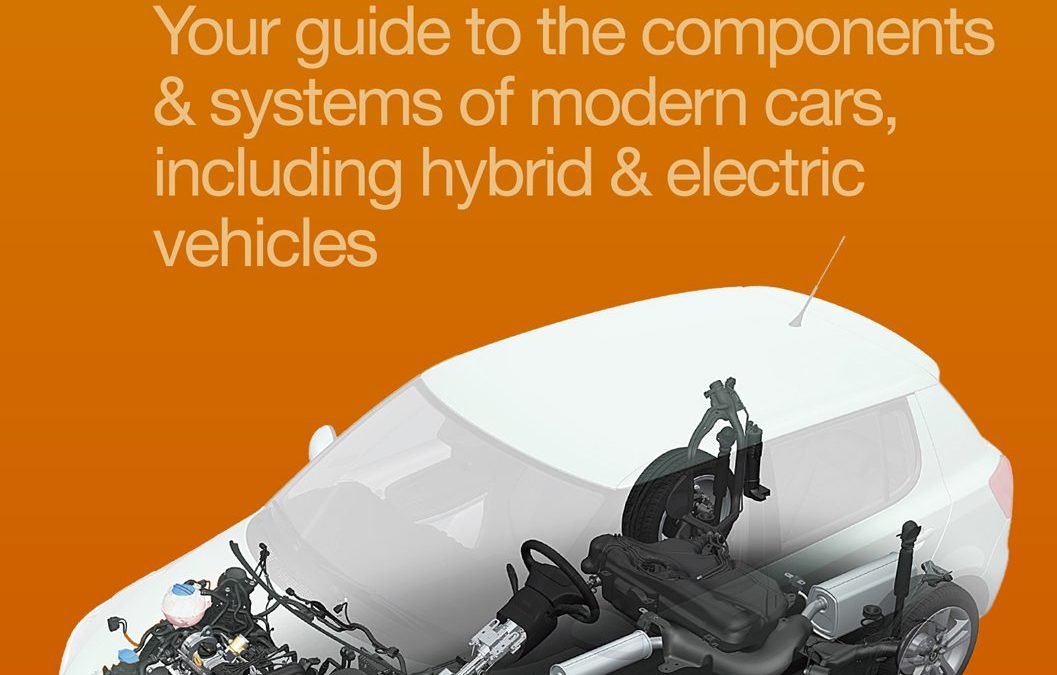
Your Guide to the Components & Systems of Modern Cars, Including Hybrid & Electric Vehicles
A comprehensive guided tour under the skin of the car. Diesel, petrol (gasoline), electric, hybrid and alternative propulsions are all dissected and explained in a reader-friendly manner, and as you move from the engine to the tailpipe, you’ll discover what an exciting world there is within the car. Organized in intuitive chapters and backed with colorful illustrations and cutaways, this book describes the systems and parts that make your car move. Without emphasizing the ‘boring’ science bits, it discusses the practical application of various automotive terms, and explains why having more of one thing and less of another is beneficial in the real world. Whether you’re just curious, or wish to become a better car owner, this book will start you on an exciting journey.

In today’s world of online maps and travel directions delivered wirelessly to hand-held devices, getting from place to place requires little thought from most of us—which is a good thing, since accurate navigation can be tricky. Get your bearings with Mark Denny—an expert at explaining scientific concepts in non-technical language—in this all-encompassing look at the history and science of navigation.
Denny’s tour kicks off with key facts about the earth and how its physical properties affect travel. He discusses cartography and early mapmakers, revealing fascinating tidbits such as how changes over time of the direction of true north, as well as of magnetic north, impacted navigation. Denny details the evolution of navigation from the days of coastal piloting to GPS and other modern-day technologies. He explains the scientific breakthroughs in accessible, amusing terms and provides an insightful look at their effects on societies, cultures, and human advancement. Throughout, Denny frames the long history of navigation with amazing tales of such people as Pytheas, an ancient Greek navigator, and Sir Francis Drake and of such discoveries as the magnetic compass and radio direction finding.
Whether you have an interest in orienteering and geocaching or want to know more about the critical role navigation has played in human survival and progress since ancient people learned to use lodestones, The Science of Navigation is for you. With it you’ll finally understand the why of wayfinding.
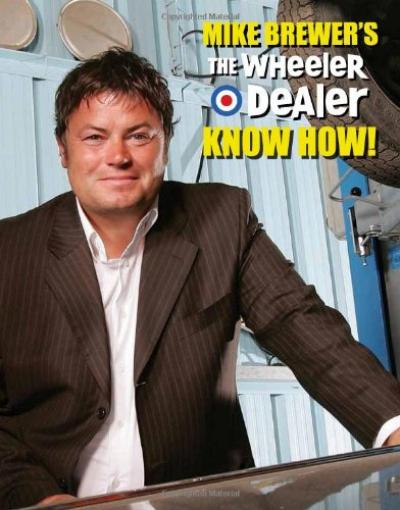
“Millions follow Mike and Edd’s collectable car adventures on Discovery Channel’s Wheeler Dealer series, now in its ninth year and shown all around the world. Here’s the book to accompany the series.<br<>br>
The Wheeler Dealer Know How is written by Mike Brewer, cheeky chap and TV’s best-known car dealing expert. In a career spanning almost 30 years, Mike has seen and done everything when it comes to buying and selling cars, and having established a successful career as a television presenter, is eager to share his knowledge, passion and enthusiasm for cars.<br<>br>
Telling you all you need to know about buying, preparing and selling modern classic cars, this book guides you through the minefield that is the world of car dealing, and helps you avoid the pitfalls that await the unwary. Plus, with stories and anecdotes from Mike’s time in the trade, you’ll gain a fascinating insight into the world of wheeler-dealing.”

The Holley carburetor is an icon in the performance industry. Thirty, forty, even fifty years ago, if you looked under the hood of any modified or performance car, you more than likely would discover a Holley carburetor lurking there. Often, many enthusiast’s first modification is swapping out the factory induction system for a new Holley 4-barrel carb and intake manifold.
While many of today’s modern cars have moved past carburetors and into high-tech fuel-injection systems, most cars from the highly collectible eras are still running carburetors. Carbs are comparatively inexpensive, highly tunable, and do not require laptops, expensive tuning equipment, or computers to function. And by far, the most popular carb still in use is the Holley carb.
In David Vizard’s How to Super Tune and Modify Holley Carburetors, best selling author Vizard explains the science, the function, and most important, the tuning expertise required to get your Holley carburetor to perform its best for your performance application, whether it’s street, strip, supercharging, or race applications. Holley has been a best-selling subject for years, and this much-needed update guides you through the traditional 4150 Double Pumper, Dominator, and 4160 vacuum secondary models, as well as all the recent releases from Holley, including the Ultra Street Avenger and Ultra HP Series Carbs.
With its high degree of tuning ease, and with all the new models coming into the market, the knowledge of an expert like Vizard is a requirement to meet your performance goals, now more than ever. This book is an essential addition to any hot rodder’s library.

All the way from inception to its modern legacy, author Barry Edwards explores the many inventions of Peel Engineering and celebrates the ingenuity of one of its prominent inventors: Cyril Cannell. The P50, the world’s smallest production car. is only one of the many designs that have made Peel Engineering’s story so extraordinary. This book looks at the development of ideas and inventions, such as bike fairings, Cannell’s patented monorail, and Peel Engineering’s innovative use of fibreglass, Readers will also discover some first- hand accounts of Peel P50 and Trident owners’ adventures in these wonderful cars.
Autobooks-Aerobooks 2900 W. Magnolia Blvd. Burbank, CA 91505 (818) 845-0707 Hours: Tuesday-Friday 10:00 AM – 6:00 PM Saturday 10:00 AM – 6:00 PM Closed Sunday and Monday Accept Credit Cards gift cardYES, We have Gift Cards - Click Here AUTOBOOKS IS OPEN...
